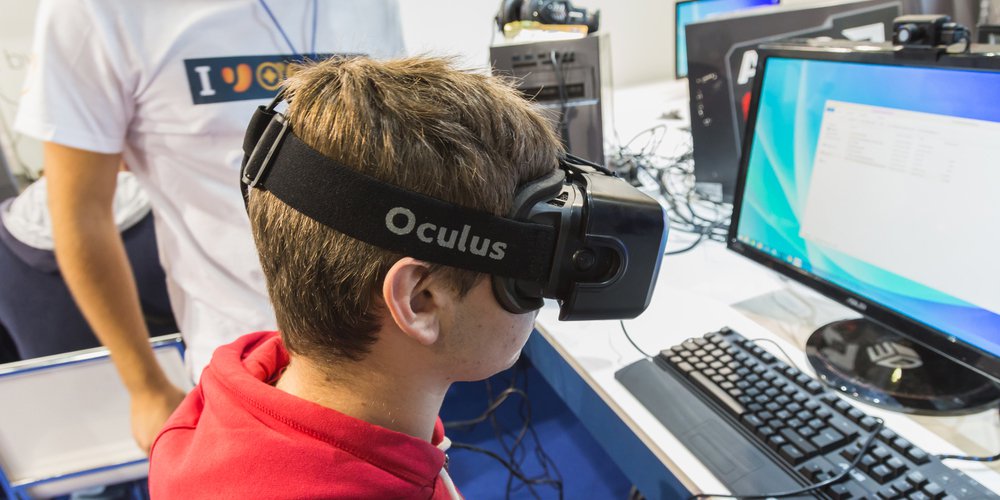Recently published in the Wall Street Journal Mark Zuckerberg predicted that the next big platform will arrive in virtual reality thanks to Oculus and the Rift headset. VR or virtual reality uses a type of headset to immerse the user in a virtual world. With the cost of the Rift headset being $600 I predict that schools will gear more towards educational augmented content to immerse students and bring learning to life like never before. Google has also tried to hop on board with their Google Cardboard. Their version of bringing VR into the home and classroom via smartphones.
There is just one problem. The majority of school districts do not allow for personal devices to hop on their wifi network. Another issue is who is going to loan 25 smartphones to a class for them to try Google Cardboard? Even though Google Cardboard is under $20 most people forget you still need a smartphone and a network to use it. Other companies such as HTC has partnered up with Steam-owner Valve to bring us HTC Vive, which will run around $800 per headset. Sony also has announce they too will be launching a VR headset but have not confirmed price or a date for launch.
There might be simpler and less cost-prohibitive solutions to get AR and VR into the classroom. Companies such as Aug That have already started creating augmented educational content. Their specialty is bringing the world... scratch that; bringing the universe to the classroom with their 360° augmented triggers without the expensive Oculus Rift headsets or Google’s Cardboard that requires a smartphone. I foresee these 360° triggers will soon become interactive. Students will be able to go in deeper and obtain more knowledge on a topic, an area, with the use of augmented content.
Not only can we augment 360° images and videos we can also augment 3 dimensional objects. These 3D objects can also be interactive so students can go deeper in their learning and obtain more information and knowledge about the augmented 3D object. “Why look at a picture of the Great Pyramid of Giza when you can bring a 3D version,” states Adam Newman, Assistant Principal in New York City. “I can tell you with first-hand experience, student engagement happens with AR technology. A student gets to open the pyramid and look inside, see how it was when it was built. Students then can also interact with the pyramid and obtain facts and see 1st hand where tombs, tunnels, and so forth are located.”
According to the 2015 survey, Teachers Know Best, sponsored by the Bill & Melinda Gates Foundation, 42% of teachers do not use digital tools because students do not have sufficient technology outside the classroom. While 35% of the teachers report they do not use digital tools because their schools do not have adequate funding to purchase technology. While the Oculus Rift and other VR headsets sound amazing in reality they will be just another nifty tech gadget, if you can afford it. Certainly not something you’ll be seeing in schools.
Virtual reality I foresee will gear towards the gaming industry. True gamers who want to be completely immersed in their game will pay the higher price tag. Schools have a budget and—face it—they look for what they can get for little to no money. Most of their budget goes towards salaries, properties, transportation, and insurance leaving very little money for technology.
With the cost of the Rift around $600 a school can purchase 2-4 Tablets or iPads depending on the brand and or discount. Which will make a school have to choose. They will pick what will get them most bang for their buck. I can tell you that it will not be a classroom set of 25 Oculus Rift headsets. School districts are going to look towards companies like AugThat to obtain the rich augmented educational content rather than pay $600-$800 for a nifty gadget.
Teachers and students have already discovered how powerful augmented reality can be as an educational tool. I foresee that companies such as Facebook will soon realize that virtual reality is awesome but the average Joe, school districts, and our students will not be able to afford $600+ headsets.











